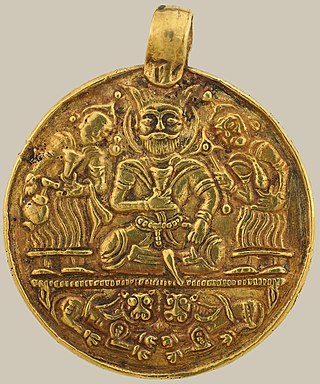The 900s decade ran from January 1, 900, to December 31, 909.
The 910s decade ran from January 1, 910, to December 31, 919.
The 920s decade ran from January 1, 920, to December 31, 929.
The 930s decade ran from January 1, 930, to December 31, 939.
The 940s decade ran from January 1, 940, to December 31, 949.
The 950s decade ran from January 1, 950, to December 31, 959.
The 960s decade ran from January 1, 960, to December 31, 969.
The 980s decade ran from January 1, 980, to December 31, 989.
The 990s decade ran from January 1, 990, to December 31, 999.

Year 961 (CMLXI) was a common year starting on Tuesday of the Julian calendar.

Year 983 (CMLXXXIII) was a common year starting on Monday of the Julian calendar.

Year 958 (CMLVIII) was a common year starting on Friday of the Julian calendar.

Year 947 (CMXLVII) was a common year starting on Friday of the Julian calendar.

Liu Zhiyuan, later changed to Liu Gao (劉暠), also known by his temple name as the Emperor Gaozu of Later Han (後漢高祖), was the founding emperor of the Shatuo-led Chinese Later Han dynasty, the fourth of the Five Dynasties during the Five Dynasties and Ten Kingdoms period. He was the older brother of the Northern Han founder Liu Min.
Liu Chengyou, also known by his posthumous name as the Emperor Yin of Later Han (後漢隱帝), was the second and last emperor of the Later Han dynasty of China, during the Five Dynasties and Ten Kingdoms period. He reigned from 948 until his death in 951.
Li Gu, courtesy name Weizhen (惟珍), formally the Duke of Zhao (趙公), was an official of the Later Tang, Later Jin, Later Han, and Later Zhou, Liao, and Northern Song dynasties of China. He served as a chancellor under the Later Zhou dynasty.
Empress Li, known as Empress Dowager Zhaosheng (昭聖太后) during Later Zhou, was an empress of the Chinese Five Dynasties and Ten Kingdoms Period state Later Han. She was the wife of Later Han's founder Liu Zhiyuan and the mother of its second emperor Liu Chengyou. She served as regent in the interregnum of 951, after the death of her son until the installation of his successor.
Su Fengji (蘇逢吉) was a chancellor of the Chinese Five Dynasties and Ten Kingdoms Period state Later Han. He was historically described as cruel and greedy. He committed suicide when Later Han's emperor Liu Chengyou was killed while trying to battle the general Guo Wei's rebellion.
Su Yugui (蘇禹珪), courtesy name Yuanxi (元錫), formally the Duke of Ju (莒國公), was an official during the Chinese Five Dynasties and Ten Kingdoms Period Later Jin, Later Han, and Later Zhou states, serving as a chancellor during Later Han and Later Zhou.
Yang Bin (楊邠), formally the Prince of Hongnong (弘農王), was a chancellor of the Chinese Five Dynasties and Ten Kingdoms Period Later Han state, serving effectively as the head of the government for most of the reign of its second emperor Liu Chengyou, leading a group of high-ranking officials in doing so. However, Liu Chengyou eventually tired of these officials' governance and had Yang killed, along with Shi Hongzhao and Wang Zhang.





